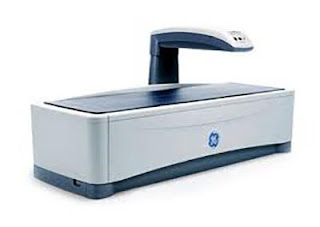Comprehensive Abdomen and Pelvis Ultrasound: Clinical Applications and Interpretation-sanjivini diagnostics
Introduction
Ultrasound imaging has revolutionized medical diagnostics, offering a safe, non-invasive, and highly versatile tool for evaluating various organs and structures within the abdomen and pelvis. A comprehensive abdomen and pelvis ultrasound, also known as a "full abdominal ultrasound," provides invaluable insights into the health of these crucial areas of the body. In this blog, we will explore the clinical applications and interpretation of comprehensive abdomen and pelvis ultrasounds, shedding light on the essential information they can provide to healthcare professionals.
Clinical Applications
Liver Evaluation:
- The liver's size, shape, and texture can be assessed to detect various liver conditions such as fatty liver, cirrhosis, or liver tumors.
- Blood flow within the liver can be evaluated to diagnose conditions like portal hypertension.
Gallbladder Assessment:
- Detect gallstones, inflammation, or infection of the gallbladder.
- Assess the gallbladder's ability to contract and release bile.
Pancreatic Evaluation:
- Detect tumors, cysts, or inflammation in the pancreas.
- Assess the pancreas's ability to secrete digestive enzymes.
Spleen Examination:
- Evaluate the size, shape, and texture of the spleen.
- Detect abnormalities like splenomegaly or focal lesions.
Kidney and Urinary Tract Imaging:
- Assess the size, shape, and position of the kidneys.
- Detect kidney stones, cysts, tumors, or signs of renal artery stenosis.
- Examine the bladder for stones, tumors, or signs of infection.
Abdominal Aorta and Blood Vessels:
- Measure the diameter of the abdominal aorta for aneurysms.
- Evaluate blood flow in major abdominal vessels, identifying blockages or abnormalities.
Pelvic Assessment:
- Examine the uterus, ovaries, and fallopian tubes in females for conditions like fibroids, cysts, or ectopic pregnancies.
- Assess the prostate and seminal vesicles in males for signs of inflammation or tumors.
Lymph Node Evaluation:
- Detect enlarged lymph nodes, which may indicate infection or malignancy.
Interpretation of Findings
Interpreting a comprehensive abdomen and pelvis ultrasound requires expertise and a thorough understanding of anatomy and pathology. Here are some key aspects to consider:
Size and Shape: Evaluate the size, shape, and symmetry of organs. Any deviations from the norm may indicate pathology.
Echogenicity: Assess the echogenicity (brightness) of organs and structures. Hypoechoic areas may indicate tumors, while hyperechoic areas could signify fatty infiltration.
Vascularity: Doppler ultrasound can assess blood flow within organs and vessels. Abnormal blood flow patterns can help diagnose vascular issues or tumors.
Lesion Detection: Look for any abnormal masses, cysts, or lesions. Assess their size, location, and characteristics to determine their nature (e.g., solid vs. cystic).
Dilated Structures: Identify dilated structures such as bile ducts, ureters, or the renal pelvis, which may indicate obstructions.
Lymph Nodes: Evaluate lymph nodes for size, shape, and vascularity. Enlarged nodes may require further investigation.
Bladder Assessment: Measure bladder volume, assess for wall thickening, and look for bladder stones or tumors.
Conclusion
Comprehensive abdomen and pelvis ultrasounds play a pivotal role in diagnosing a wide range of medical conditions affecting these vital areas of the body. Their non-invasive nature, real-time imaging capabilities, and lack of ionizing radiation make them a preferred choice for many diagnostic scenarios. Accurate interpretation of ultrasound findings requires skilled sonographers and radiologists who can provide valuable information to guide patient care and treatment decisions. As technology continues to advance, the clinical applications and interpretation of these ultrasounds will become even more precise and informative, further improving patient outcomes.
.jpg)





Comments
Post a Comment